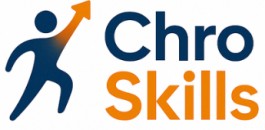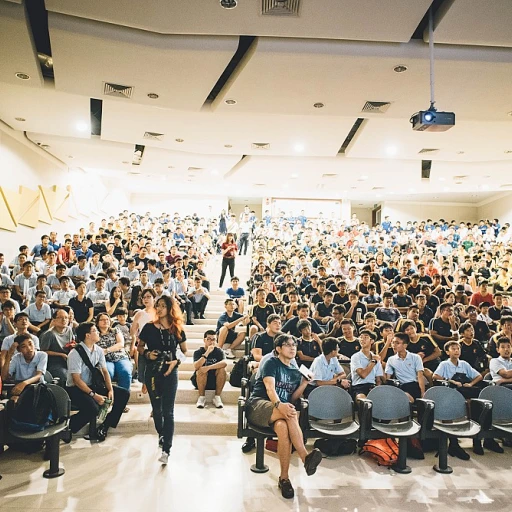
The Evolving Role of the Chief Human Resources Officer
The Changing Dynamics of HR Leadership
The role of the Chief Human Resources Officer (CHRO) has evolved significantly in recent years, moving beyond traditional HR management to become a strategic partner in driving business success. This transformation is deeply influenced by the integration of digital tools and platforms, reshaping the way HR departments operate and deliver value to the organization.
Today's CHROs must navigate a landscape filled with complex challenges to enhance employee experiences and streamline processes. This involves leveraging technologies like composable CMS solutions, which offer a versatile framework for managing digital content across an enterprise. These systems are pivotal for constructing a robust digital experience platform (DXP), allowing businesses to create and deliver personalized experiences efficiently.
Composable architecture, often highlighted in headless CMS models, permits the CHRO to adopt a modular approach, utilizing reusable components and APIs. This flexibility is essential for rapid adaptation to changing needs, enabling the management of content and experiences more proficiently.
Incorporating these technologies equips HR leaders with the tools necessary for strategic decision-making, data-driven insights, and long-term planning. As discussed in more detail in other sections, the forward-thinking CHRO embraces technology not only to enhance current operations but also to prepare for future trends in HR and technology. For more insights into how HR leaders can harness technology effectively, visit our discussion on harnessing technology for HR leadership.
Key Skills for a Modern CHRO
Critical Abilities for Today's Human Capital Leaders
Managing human resources in the modern era requires a unique set of skills that blend traditional HR expertise with technological acumen. Chief Human Resources Officers (CHROs) are expected to navigate this evolving landscape effectively. Here are some of the key capabilities required:- Strategic Vision: Successful CHROs are visionary leaders who understand how to align HR strategies with overarching business goals. They leverage data-driven insights to make informed decisions, ensuring that HR initiatives contribute positively to the organization’s success.
- Data Utilization: The ability to harness data is crucial. CHROs need to transform workforce data into actionable insights that inform policy, rewards, and employee engagement strategies. This ability to inspire transformational change through data cannot be overstated.
- Technology Proficiency: With the rise of headless and composable CMS, CHROs must possess a sound understanding of digital platforms and how these tools can improve HR management. Knowledge of composable architectures, CMS platforms, and experience platforms allows them to innovate and manage content effectively.
- Digital Experience Focus: A focus on improving digital experiences (DXP) for employees is essential. CHROs should ensure that all HR platforms and tools used create seamless and positive experiences for their workforce, thereby boosting productivity and satisfaction.
- Adaptation to Composable Systems: Acquaintance with composable content and CMS components is vital. The ability to manage content across various digital experiences seamlessly ensures that the organization remains agile and responsive to change.
Integrating Technology: The Role of a Composable CMS
Leveraging Technology to Transform HR Management
Integrating technology into HR management has become essential for modern organizations. A prominent innovation is the introduction of composable CMS, which revolutionizes how content is managed and delivered. By employing a composable architecture, a Chief Human Resources Officer (CHRO) can enhance the efficiency of content management systems (CMS) to streamline digital experiences within the HR domain.
Composable CMSs, often headless and based on a digital experience platform (DXP) approach, allow HR professionals to manage content seamlessly across different platforms. These systems use APIs and reusable components to integrate various third-party tools, offering flexibility and scalability. This architecture empowers businesses to efficiently create and deliver personalized digital content to employees, ultimately enhancing the employee experience.
Furthermore, the use of a composable DXP and a CMS platform allows for a more agile content delivery framework. This empowers HR leadership to pivot quickly and adapt to changing business needs without having to overhaul their content management system. By utilizing a flexible, open-source approach, organizations can harness the power of advanced content management and create compelling digital experiences while optimizing time and resources.
In a world where the digital experience is becoming just as crucial as traditional HR services, understanding these technologies is vital for a CHRO. To delve deeper into mastering these systems, you may find this comprehensive guide invaluable for enhancing your organization's HR capabilities.
Strategic Decision-Making with Data
The Power of Data in Strategic HR Decisions
In modern HR management, strategic decision-making sits at the core of the Chief Human Resources Officer (CHRO)’s role. To effectively navigate the complexities of today's workforce, CHROs are increasingly leveraging data-driven approaches. This requires a keen understanding of not just human resource dynamics, but also the sophisticated systems that drive data aggregation and analysis.
Integrating technology, such as a composable Content Management System (CMS), into HR strategies is imperative. These platforms offer a flexible architecture allowing for a more refined content delivery system. A well-implemented CMS can handle diverse digital experiences while managing content across various touchpoints, utilizing reusable components and APIs for seamless content management.
Businesses benefit from this composable approach as it offers the agility to tailor digital experiences to meet evolving business needs and maximize efficiency. Through headless CMS architecture, a CHRO can ensure better user experiences across departments by customizing and scaling digital content, which in turn enhances organizational agility.
The incorporation of innovative tools like CMS platforms allows for improved content management strategies and decision-making. By relying on digital experience platforms, CHROs can quickly adapt to new market demands and labor trends. Furthermore, the use of open-source systems provides an opportunity to continuously refine the management system, ensuring a steady alignment with business objectives.
Time is of the essence, and with a composable DXP, CHROs can not only create robust content strategies but also facilitate better management of sprawling human resources data. Ultimately, it’s about crafting an effective digital experience that supports strategic goals while ennacting impactful HR initiatives efficiently.
Enhancing Employee Experience
Transforming Employee Interactions
In the ever-evolving landscape of human resources, enhancing the employee experience has become a focal point for modern organizations. A vital aspect of this transformation involves leveraging digital tools and platforms to create a seamless and engaging work environment. To begin with, the utilization of a composable CMS (Content Management System) enables HR teams to manage content effectively. This involves curating various components crucial for employee engagement, such as training modules, onboarding materials, and company updates. These cms platforms are integral for delivering content that matches the digital experiences employees expect today. Incorporating a composable architecture allows for greater flexibility in adapting digital experiences to meet the diverse needs of the workforce. By using a headless cms, organizations can separate content creation from content delivery, ensuring that information remains consistent across various devices and interfaces. This approach not only improves the employee experience but also streamlines internal content management processes. Moreover, integrating digital experience platforms (DXP) adds another layer of efficiency, supporting HR departments in crafting personalized interactions. These platforms can combine with third-party tools through APIs, enhancing tasks like performance management and feedback collection with minimal time investment. A strategic approach to adopting a composable DXP framework facilitates the development of reusable components, further enhancing the employee's digital journey. This commitment to leveraging a modern content management system not only boosts satisfaction but also promotes a culture of continuous learning and engagement. As businesses continue to evolve, the ability to dynamically manage content and experiences becomes essential. The role of a CHRO is pivotal in ensuring technologies are effectively integrated, enabling the creation of a robust digital environment that meets both organizational goals and employee needs effectively.Future Trends in HR and Technology
Embracing the Digital Future in HR
The future of HR is increasingly becoming digital, with the integration of advanced technologies revolutionizing how HR functions are executed. This transformation necessitates that Chief Human Resources Officers (CHROs) stay abreast with evolving digital tools and platforms. These advances are not just about adopting new technologies but also about understanding their implications on HR strategies and operations.
One of the pivotal elements in this digital shift is the rise of composable CMS platforms. These systems allow for the management and delivery of digital content in a flexible and scalable manner, facilitating a more streamlined approach for HR processes. By adopting a composable architecture, CHROs can efficiently manage content and design personalized digital experiences for employees.
Additionally, the use of headless CMS solutions is gaining traction due to their ability to separate content management from presentation. This separation enables HR teams to deliver content across various channels quickly and efficiently, thus enhancing the overall digital experience (DXP) for employees.
The Role of APIs in HR Technology
Application Programming Interfaces (APIs) are fundamental to the current evolution of HR technologies. They facilitate seamless data exchange between disparate HR systems, which is key for integrating various HR management systems and tools. This approach not only improves operational efficiency but also assists in strategic decision-making with access to real-time data.
Moreover, the implementation of a composable DXP in HR allows CHROs to craft unique and reusable digital experiences by orchestrating third-party integrations and leveraging open source components. This not only streamlines HR management but also results in better adaptability to changing business needs.
Anticipating Future Trends
The landscape of HR will continue to evolve, with emerging technologies shaping its future. CHROs must prepare to harness advancements such as artificial intelligence, machine learning, and data analytics to enhance HR operations. These technologies will drive more personalized employee experiences and efficient management systems, propelling HR departments towards becoming strategic partners in the business.













